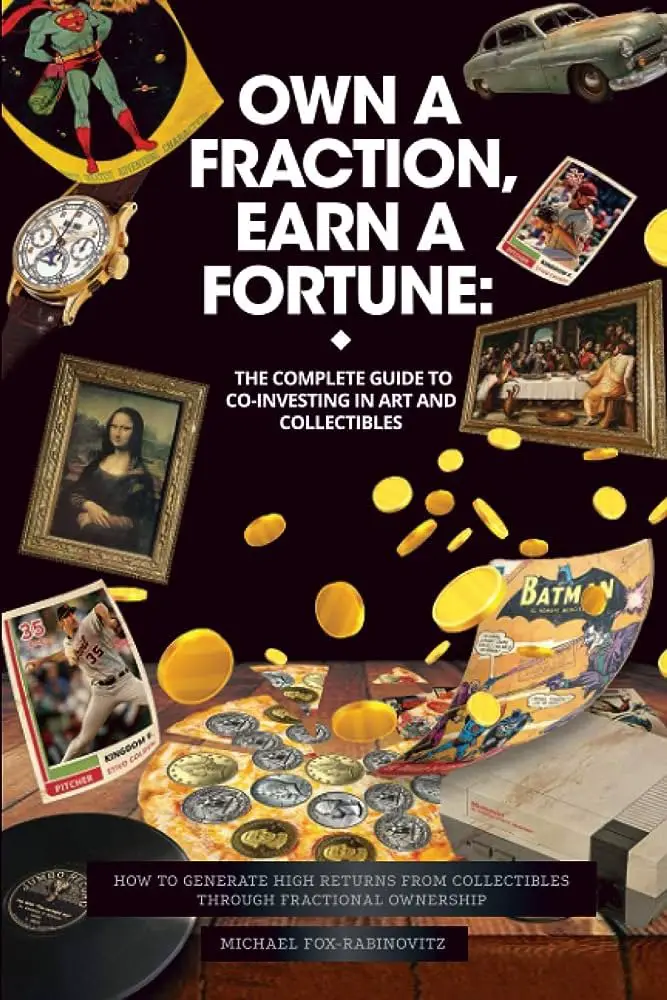Are you interested in investing in collectibles and art? Well, you’ve come to the right place! In this blog article, we will provide you with valuable tips for investing in collectibles and art. Whether you are a seasoned investor or just starting out, these tips will help you make informed decisions and maximize your potential returns. So, let’s dive right into the world of collectibles and art and explore the exciting opportunities that await!
Tips for Investing in Collectibles and Art
Investing in collectibles and art can be an exciting and potentially profitable venture. Whether you are a seasoned investor or just starting out, it’s important to have a solid understanding of the market and follow certain guidelines to make informed decisions. In this article, we will provide you with valuable tips to help you navigate the world of collectibles and art investing.
1. Research and Educate Yourself
Before diving into the world of collectibles and art investing, it’s crucial to conduct thorough research and educate yourself about the market. Here are some key steps to consider:
- Read books and articles about collecting and art investment to familiarize yourself with different categories, artists, and historical contexts.
- Attend art fairs, exhibitions, and auctions to gain insights and learn from experts in the field.
- Join online forums and communities where collectors and investors share knowledge and experiences.
- Consult with experts or seek advice from reputable art consultants or financial advisors with experience in collectibles and art.
By investing time in research and education, you’ll develop a stronger foundation and be better equipped to make informed decisions.
2. Define Your Investment Strategy
Having a clear investment strategy is key to successful investing in collectibles and art. Consider the following factors when defining your strategy:
- Identify your investment goals, whether it’s long-term appreciation, diversification, or personal enjoyment.
- Establish a budget for your investments and stick to it. It’s important to allocate funds wisely and not overspend.
- Choose a specific category or theme that aligns with your interest and expertise. It could be anything from fine art, antiques, rare books, coins, or sports memorabilia.
- Decide whether you want to focus on established artists and iconic pieces or explore emerging artists and trends.
By outlining a clear investment strategy, you’ll have a roadmap to guide your decision-making process.
3. Authenticate and Evaluate Collectibles and Art
When investing in collectibles and art, authenticity and condition are crucial factors that can greatly affect value. Here’s what you need to consider:
- Consult experts, appraisers, or reputable dealers to authenticate the origin and legitimacy of the item you’re interested in.
- Examine the condition of the collectible or artwork. Look for any damage, repairs, or signs of restoration that could impact its value.
- Consider the rarity and historical significance of the piece. Items with unique attributes or a notable provenance tend to have higher value.
It’s essential to conduct due diligence and gather as much information as possible before making a purchase.
4. Diversify Your Collection
Diversification is a key principle of investment, and it applies to collectibles and art as well. Here’s why diversifying your collection is important:
- Investing in a variety of artists, categories, and mediums can help mitigate risks and maximize potential returns.
- A diverse collection allows you to adapt to market trends and fluctuations.
- Consider allocating a percentage of your investment portfolio to collectibles and art to balance your overall investment strategy.
By diversifying your collection, you can spread out potential risks and increase the chances of finding valuable investment opportunities.
5. Keep Records and Preserve Your Investment
Collectibles and art should be treated as investments, and it’s important to keep detailed records and protect your assets. Consider the following practices:
- Maintain a comprehensive inventory of your collection, including purchase dates, provenance, appraisals, and any relevant documentation.
- Consider insuring your valuable items to protect against theft, damage, or loss.
- Properly store and display your collectibles and art to preserve their condition and value. Use archival materials, controlled environments, and professional framing when necessary.
By documenting and preserving your collection, you not only safeguard your investment but also create a valuable resource for future buyers or potential appraisal.
6. Stay Informed and Engage with the Art Community
Investing in collectibles and art is an ongoing learning process. Stay engaged and up-to-date with the market by considering these practices:
- Follow art news, market trends, and auction results to gain insights into the changing dynamics of the art market.
- Attend exhibitions, gallery openings, and art events to broaden your knowledge and network with fellow collectors and professionals.
- Stay connected with the online art community through social media, blogs, and newsletters.
By staying informed and engaging with the art community, you’ll continue to expand your expertise and identify new opportunities.
7. Patience and Long-Term Perspective
Investing in collectibles and art is not a get-rich-quick scheme. It requires patience and a long-term perspective. Consider these points:
- Art and collectibles markets tend to be cyclical, with ups and downs. Be prepared to hold onto your investments for an extended period to maximize potential returns.
- Avoid impulsive buying and rushing into trends. Take the time to research, evaluate, and consider the long-term potential of an investment.
- Understand that values can fluctuate and vary across different markets, regions, and time periods.
By adopting a patient and long-term approach, you’ll increase your chances of making successful investments in collectibles and art.
Remember, investing in collectibles and art should be a combination of passion and strategic decision-making. By following these tips and continuously expanding your knowledge, you’ll be well-equipped to navigate the exciting world of collectibles and art investment. Good luck on your investment journey!
My Top Ten Tips for Investing in Antiques and Collectibles!
Frequently Asked Questions
Frequently Asked Questions (FAQs)
What are some tips for investing in collectibles and art?
Investing in collectibles and art can be an exciting venture. Here are some tips to help you make informed decisions:
How do I determine the value of a collectible or artwork?
Valuing collectibles and artworks can be complex. Factors such as rarity, condition, artist reputation, and demand in the market all contribute to their value. Researching similar items and consulting experts in the field can help you assess their worth.
Is it better to invest in popular or niche collectibles and art?
Both popular and niche collectibles and art can have investment potential. Popular items often have a larger market and potential for higher returns, while niche items may offer unique opportunities and potential for growth with a smaller pool of collectors.
What should I consider before purchasing collectibles or art as an investment?
Before investing, it is important to consider factors such as your budget, your interest and knowledge in the specific collectible or art category, storage and maintenance costs, market trends, and the potential for future demand and appreciation.
Are there any risks involved in investing in collectibles and art?
Like any investment, there are risks associated with investing in collectibles and art. These can include market fluctuations, changes in taste and trends, authenticity issues, and potential damage or loss during storage or transportation. Conducting thorough due diligence can help mitigate some of these risks.
Should I buy collectibles and art for immediate resale or long-term investment?
The decision to buy for immediate resale or long-term investment depends on your investment goals and strategy. Some collectors focus on short-term gains by buying and selling quickly, while others take a long-term approach, holding onto their assets and waiting for their value to appreciate over time.
How can I ensure the authenticity of a collectible or artwork?
To ensure authenticity, it is crucial to purchase from reputable sources and sellers. Research the item’s provenance, look for certificates of authenticity, and consider seeking expert opinions or appraisals. In some cases, forensic testing or scientific analysis may be necessary to verify authenticity.
Should I insure my collectibles and art investments?
Insuring your collectibles and art investments is highly recommended. Insurance provides protection against theft, damage, or loss. Consult with insurance specialists who are knowledgeable about art and collectibles to ensure that you have adequate coverage for your investments.
Final Thoughts
In conclusion, investing in collectibles and art can be a lucrative strategy for diversifying your portfolio. To maximize your chances of success, it is important to educate yourself about the market, stay informed about trends and developments, and engage with trusted experts and resources. Conducting thorough research, setting realistic expectations, and focusing on quality and rarity are essential when making investment decisions in this field. Additionally, diversifying your collection across different categories and artists can help mitigate risks. By following these tips for investing in collectibles and art, you can create a well-balanced portfolio that has the potential to generate significant returns over time.



